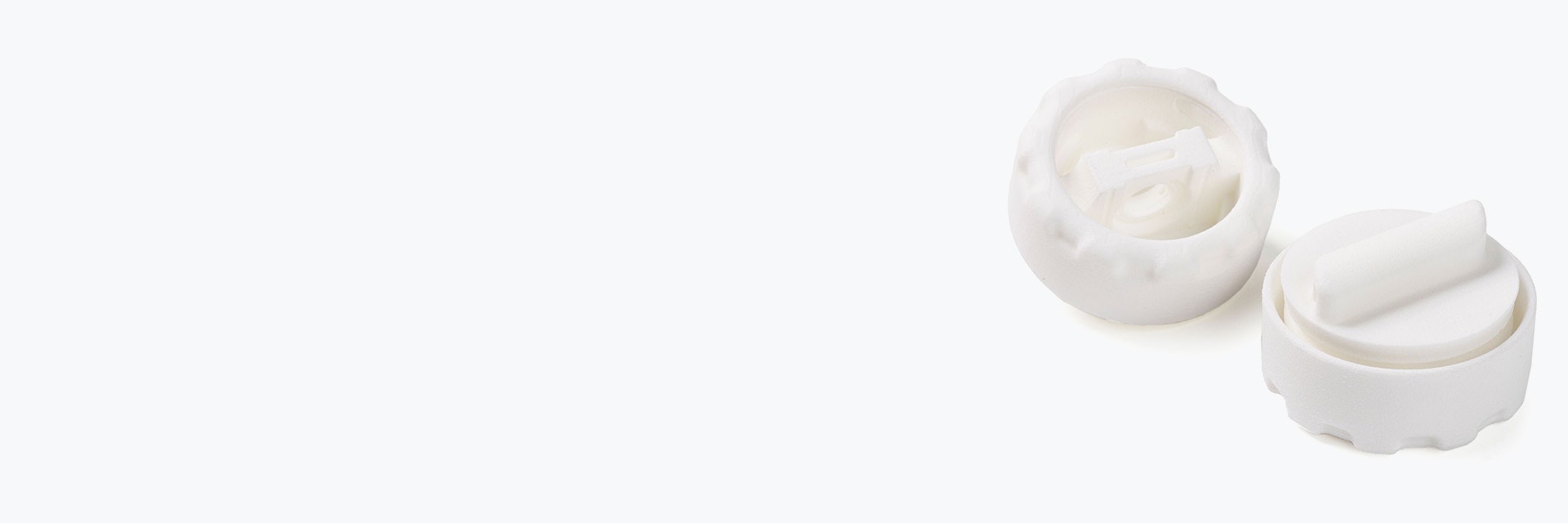
INTERVIEW
3DP&Me: “Adopting AM Is a Cultural Shift Rather than a Technological Shift”
An interview with Jeremy Pullin, Head of Additive Manufacturing at Sartorius, a leading provider of equipment and services to the biotech industry.
Welcome, Jeremy. Before we dive into what you do, tell us a little bit about yourself and your journey with AM so far.
Certainly. So, I’m Jeremy Pullin — I’m the Head of Additive Manufacturing for Sartorius and joined the company in 2016. Before that, I was at Renishaw. I brought 3D printing into Renishaw around 2002 or 2003, starting with a little Stratasys dimension machine and going from there, really.
In 2015, under the direction of the CEO, Sartorius decided to take a look at additive manufacturing to see what it was all about and assess its relevance to its own operations. The CTO put together an investigation group, and having decided that AM was something that they wanted to get serious about, they recruited me as an industry expert. Since then, we have radically increased not just the number of printers but also the types of AM technologies we use. The number of Sartorius sites using AM has increased from an initial 4 to 13 and growing.
Not just the Head of Additive Manufacturing — you’re in charge of Sartorius’ Additive Manufacturing Group. What is that, and when did it start?
The Sartorius Additive Manufacturing Group started in 2016. It’s a group of additive manufacturing technology specialists, including designers, scientists, technicians, researchers, and industrialization engineers. The group's role is multifaceted; we educate people around the group and validate materials, but its core driving goal has always remained the same: to ensure that Sartorius gains the maximum benefit from the many opportunities that AM offers. This does not mean ‘using AM as much as we can’ but rather expanding the field of potential applications where it makes sense to use it.
You’re a part of the biotech industry — where does Sartorius fit in?
Sartorius is a supplier of the devices, consumables, and services pharmaceutical companies need to produce biologics. It started out making precision lab scales and went from there. The company itself is around 150 years old, so it’s been around a long time, and we’ve undergone a lot of growth in the last ten years or so.
At times, we look at ourselves and think that we’ve become a big company until we look at some of our clients — the likes of GSK, GE Healthcare, Johnson & Johnson, and so on — and realize our headcount probably wouldn’t fill their canteen!
How does biotech compare to other industries when it comes to adopting AM?
It’s funny because when you look at additive manufacturing as an industry, traditionally, you have the likes of aerospace and automotive. People look at them and say, “Yes, well, we must focus on aerospace and automotive because they’re big companies.” But then you look at the size of some of our customers, some of whom can have a turnover of 40 or 50 billion USD a year.
It's true, though, that the world of biotech is late to the party in terms of AM, and they’re years behind aerospace and automotive. But in terms of scale or regulatory requirements, they’re very much on par.
With so many regulations to work around, it must be a challenge to introduce new technologies or manufacturing strategies?
It can be very frustrating from an engineering point of view. You try to follow the Good Manufacturing Practices (GMP) with configurations of bioreactors, for example, where we know we can improve it, we can make it more efficient. But the response is, “No, no, no, no, you mustn’t improve it — what we have works. We must replicate what works; we must not change what works.”
But hey, that’s the game. And at the end of the day, every time you get a vaccine or a dose of antibiotics, you should be pleased that it’s so tightly regulated because when medicines go wrong, they tend not to just pull over to the hard shoulder like a broken down car. The consequences are much more serious.
Is it a case of the industry being risk-averse, or is it more about investment?
I think it is more risk aversion — I don’t think even the biggest drug companies would say that their product can’t be improved. Obviously, they spend billions on R&D each year. But part of the problem is that they can only tweak one thing at a time, and there are always people who insist that something is impossible. You won't reason with or convince them until you physically put it in front of them. And that takes time.
The other thing is when you talk about risk and trust, you’re actually talking about human nature. On an organizational level, you’re talking about culture. So it’s not so much about changing a company's technology with disruptive technologies like additive manufacturing. It’s about shifting the culture of a company to one that is willing to try something new, to push boundaries, to sniff and see what the market will take. That’s what it’s really about — a cultural shift rather than a technological shift.
How do you overcome a challenge like that at Sartorius?
We begin by only using AM when and where it makes sense. Nothing kills the credibility of a technology faster than the wrong application. Even if you look at established technologies like internal combustion — a V10 Lamborghini engine is fantastic in an Audi R8, but if you put it in a Ford Escort, people will be saying, "This is terrible! Every time I go to the shop to pick up a paper, I burn six liters of fuel!"
How do you spot the applications where AM can really make a difference?
The two biggest drivers are time — we have an example of a part coming along at the moment, we’re approaching product launch and need to develop a part quicker than the timescales of traditional technologies would allow — and added value. Where can additive manufacturing add value?
In the case of our spectroscopy port, for example, there was a particularly challenging geometry in there that was right up additive manufacturing’s alley, if you like. And it was a really good fit because of the actual function of the part and the geometry that was required to fulfill that function.
Generally speaking, if somebody wanted an iPhone case, could we 3D print that? Absolutely. Would we 3D print that? Absolutely not. We have all these other technologies available to us that we need to consider.
There’s a common misconception that it’s all or nothing with AM. Is that something you’ve encountered in your career?
One thing that I’ve come across plenty of times in my career is that people think that once you become an advocate for additive manufacturing, it becomes a competitive thing — you want things to be additively manufactured rather than traditionally manufactured. And that is just not true. It has not, or should never be, regarded as a competitive technology — it is a complementary technology.
So it’s all about asking, “Where is that added value?” Is there added value in doing it through additive manufacturing? No? OK, then we need to look at other reasons for doing it — and it could be timescale or whatever — but at its best, it is a complementary technology rather than a competitive one.
Sartorius itself is a great example of that — tell us a little more about how you approach these decisions as a company.
First, you need to look at the structure of the company. The AM Group sits under the same umbrella as the groups that develop injection molding and thermal forming, so it’s pretty much inevitable by the design of the organization that we're going to evaluate these technologies against each other.
We always start with that baseline of being technology agnostic. Obviously, once you make that decision, it will change the process going forward, so it’s important to make those choices early on. We’ve all seen those examples where something has been designed for one technology, and they want you to make it with another technology. Then it’s all about compromise.
What might these evaluations look like?
Outside of the obvious, like time and cost, sometimes we find that you need to challenge the question rather than just rushing out and answering it. Technology selection is awash with that.
For example, we produce a lot of hose barbs. One of the injection molding guys made the statement that you could never 3D print a hose barb — it would be too rough, have too many layer lines, it would never seal — which is why they always polish the injection molded parts until they’re super, super smooth. So we went and did a whole study on 3D-printed hose barbs, and guess what? The hose barbs sealed quite nicely with surfaces that are much rougher than with injection molding, but no one has ever challenged that assumption.
The same is true from an economic point of view. You’ll often hear that you’re better off with injection molding than AM after three years, but you need to question what costs they have considered. What about the total cost of tool ownership — maintenance, storage, specialist equipment, leasing, and so on? What about the qualification costs? It’s only when you start challenging the question that you come up with different answers, and that’s what we do.
How important is it for companies to have this sort of knowledge about AM and other technologies in-house?
Well, part of our role as the Additive Manufacturing Group within Sartorius is to educate people around the company. So, we might be educating scientists, product developers, marketing people, HR, or whoever wants to talk to us really. And that’s because it’s only through wide-scale education that you can empower people to spot the opportunities, but it’s also about expectation management.
If you purely rely on the knowledge of your suppliers, you’d be throwing things at them all the time that aren’t possible — “Oh, I read in a magazine that you can print anything.” So, spotting opportunities and expectation management are things that have to be handled in-house before it ever reaches a supplier. There is definitely a partnership involvement there that requires both sides to have a level of knowledge feeding into that decision-making process.
Share on:

Biography
Jeremy Pullin
You might also like
Never miss a story like this. Get curated content delivered straight to your inbox.
